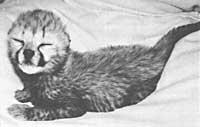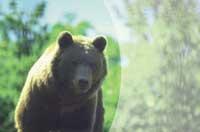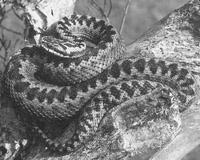Consanguinity problems
2001/07/22 Mendiburu, Joana - Elhuyar Zientziaren Komunikazioa
Little quantity, little variability For a population to be small there may be several reasons. In general, populations that do not live in very specific conditions, small geographical areas, etc. are called ‘endemic’. But within the endemic ones it can be more nuanced, since there are the so-called neoendemic ones (that is, those who, being of new origin or origin, have not had time to occupy a greater surface or distribution), as well as the so-called paleoendemic ones (that is, when the surface they occupy is nothing more than the rest of an older surface). The latter are also called relatictic populations.
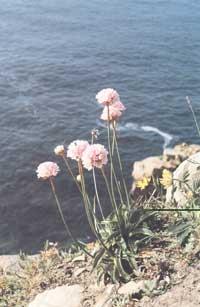
However, regardless of why the population is reduced, the shortage of individuals or specimens often causes genetic problems in both humans and plants and animals.
All living beings are based on genetic material, that is, genes are the basis for determining what we are and how we are (although then the environment adapts them). In nature, although within each species the genes are similar, there is minimal variability. And this variability allows diverse forms and physical forms to exist within populations. This diversity is essential to adapt to changes in the environment. In short, that diversity is what allows evolution.
As evolutionary theory indicates, the lower the genetic variability, the more vulnerable species are to ecological changes and disturbances. Studies have shown that genetic variability in endemic and relatictic populations is lower.
Low quantity, low quality
But genetic variability (and therefore the ability to resist the changes in the environment) is not only lower, but also the quality of these genes is lower, as the probability that genes causing diseases and/or deformations appear increases (increasing the probability that both parents suffer damage and are transmitted to descendants). Let's look at some examples.
In an experiment with maize (see figure 1), the offspring produced by two crossed genetic lines (two varieties, so to speak) is stronger and larger, but the result of self-fertilization is somewhat lower. And at the same time, with self-fertilization, the third generation is smaller, and thus increasingly precarious plants are obtained. This risk is evident in both agriculture and livestock. Consequently, farmers or ranchers have tried to cross their plants and animals with those of others to avoid this danger and get better specimens.
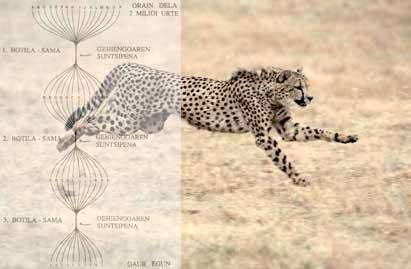
Populations of isolated Ngorongo lions in Africa and Gir Forest in Asia, for example, have more abnormal spermatozoa and have lower testosterone concentration compared to the healthy population of Serengeti Park.
On the other hand, extensive studies carried out with mammals and laboratory and domestic birds indicate that the endogamy (that is, the crossing between the ancestors themselves) causes an increase in the mortality of the offspring and a decrease in the fertility of the adults. In wild animals, captive breeding problems are more common in species of low genetic diversity. In short, consanguinity not only reduces the diversity of genes, but increases the presence of genes with mutations or damage.
Low gene variability in numerous populations
It has so far been mentioned that small groups or populations present genetic problems, but at present there is low genetic variability in species with numerous populations. There is, for example, the so-called ‘founding effect’. That is, species may and may colonize new territories. If the colonized territory is isolated, all the specimens of this place are descendants of a few ancestors, and although with the passage of time there are numerous specimens, the genetic variability is very small. This is very common in oceanic islands, but also in isolated forests, lakes, etc.
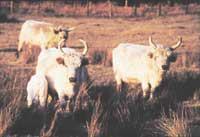
Another example is that of the species that have suffered the so-called sama bottle. In these cases, from an abundant and genetically diverse population, a large (quite) number of populations becomes genetically homogeneous, several times over time as a result of the disappearance of most specimens of the species (see figure 2).
One of the best-known cases is Cheetah. Until a few years ago it had a fairly large population, but it has not adapted very well to changing conditions and has disappeared in most places in Africa. In addition, it is one of the most difficult species to breed in captivity, since the mortality of the offspring is very high. Genetic studies showed that gepards in southern Africa have an extreme shortage of genetic variability. And this is due to a series of folds that have suffered in the recent past. That is, on numerous occasions its population has drastically decreased and recovered, but in that process genetic variability has been reduced to the extreme. Now, zoologists and researchers are concerned that if diseases appeared at any time, many of them would die.
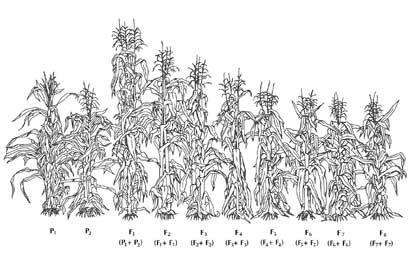
In this sense, estimates have been made so that a genetically diverse animal population does not present genetic problems and is genetically viable. In animals used for livestock, when they are small (such as sheep) it is estimated that 200 specimens are necessary and in large (such as horses) 100 specimens. In the case of the bear Grizzly it is estimated that to avoid genetic problems at 500 years is needed between 125 and 250 units.
Whatever pathway to the aforementioned genetic situations, species take a long time to recover genetic variability. But, of course, there are also exceptions to this, because there are species that, despite their low genetic variability, reproduce well and do not present pathological or other problems. Also in the new colonizations there are differences between specimens adapted to local changes, which is usually a source of genetically funny populations.
Chillingham Cows
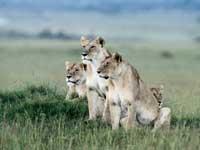
The article mentions problems of consanguinity. In fact, numerous studies have shown that endogamy in wild animals, zoos, crops and livestock reduces genetic variability and increases the appearance of damaged genes. But if in addition to endogamy an active selection is made, that is, if the livestock eliminates defective animals or malformations, the finally mutated genes are ‘expelled’ and the population was also admitted as viable.
A study published earlier this year confirms this. The research was conducted with Chillingham cows. Today, Chillingham cows live in a park in northern England. These cows live isolated for the last 300 years, that is, they have not carried cow or foreign bull during all this time.
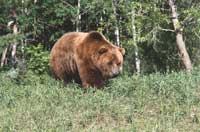
Despite living genetically isolated, no fertilization or fertility restrictions were observed, and the population seemed viable. However, for other reasons, in 1947 there were only five bulls and eight cows. By the end of October 2000 there were already 49 copies.
Perhaps that is a real bottler and it can be said that genetic variability hardly exists, and however, no reduction in the quality of genes has been observed, cows fertilize well and calves are born well.
Published in the supplement Natura de Gara.

Gai honi buruzko eduki gehiago
Elhuyarrek garatutako teknologia




